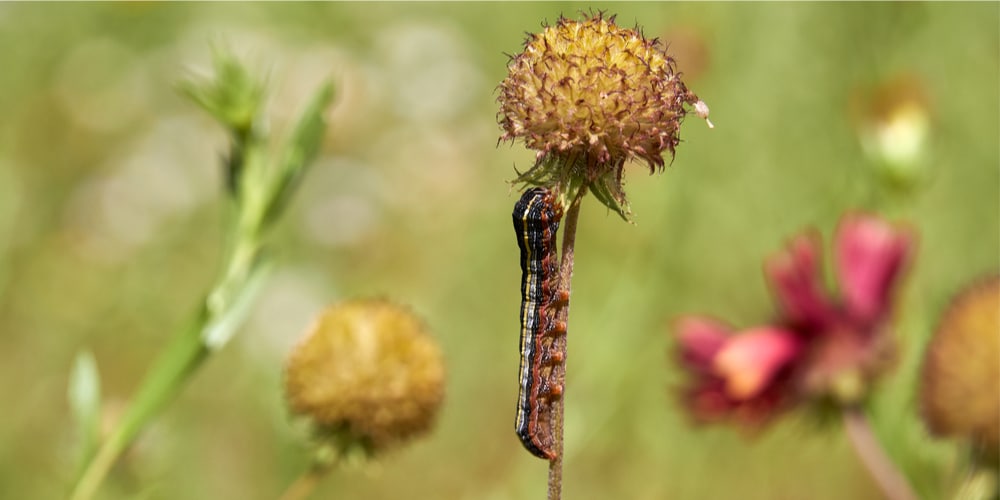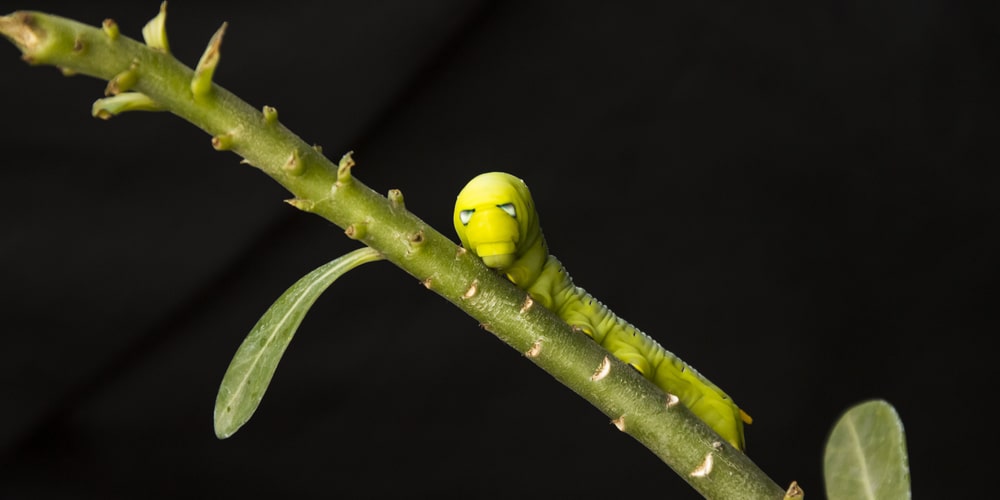What are armyworms? This is the colloquial name of the larval stage of several different moth species, and the most common one that causes damage to grass in the United States is the fall armyworm. These are caterpillar pests that can infest fields anywhere around the world. About thirty species of armyworms are found across the globe, on every continent except Antarctica.
What Do Armyworms Eat?

Armyworms, since they are larvae, exist only to consume so they can move on to the next phase in their life cycle. They are especially virulent in the southeastern section of the United States because their preferred foods grow well there—bermudagrass, bluegrass, ryegrass, corn, and turf grasses.
However, they are found anywhere in the country. Rice, agricultural grasses, and all cereal crops are on the menu for this pest. When they reach maturity, in other words, when they become moths, they only feed on the nectar of these plants, and so the crop remains unharmed.
The larval stage is the one that can (and does) wreak havoc on turf grasses and sods as well as fields of crops. The name of this pest comes from how they seem to move in like a company of soldiers, consuming everything they come into contact with and decimating grass and crops.
Does Grass Grow Back After Armyworms Have Consumed It?
The easy answer is yes. Fall armyworms plague the southeastern and midwestern US in the summer months because they cannot survive winter temperatures. They especially love the South because that is where the sod industry is based.
New sod is juicy, tender, and delicious to these little larval eating machines. Anyone working with crops, sod, cereal crops, or turfgrass should be hypervigilant during the warm months for these caterpillars, which are only about an inch and a half in length.
Armyworm Damage Control
Because armyworms consume blades of grass but don’t eat the rhizomes, with long-term care and proper pest control, grass will grow back after they’ve eaten what you can see on the surface. Rhizomes are underground grass stems that produce new blades that pop up aboveground. While it can seem that armyworms have destroyed your fescue or Bermudagrass lawn, chances are the rhizomes and roots remain untouched.
This means that you can add fertilizer and plenty of water to your lawn to give it the encouragement it needs to regrow. However, regrowing your grass is the secondary focus. The primary focus during (and after) an armyworm infestation is pesticides.
Liquid insecticides are preferable and the most effective in eliminating these hungry caterpillars. Applying insecticides when the armyworms are most susceptible to them is the most effective way to ensure they are killed, and this would be around dawn and dusk.
Follow the instructions on the use of your insecticide of choice. Once the treatment is completed, you can inspect to see if any remaining armyworms are lingering. If they seem to have mostly disappeared, you can then fertilize and water your grass. Doing this will reinvigorate your grass, and you can get your lawn back.
In Conclusion
Remember that if the infestation was particularly severe, you may need to repair your lawn by reseeding and potentially re laying sod before your lawn can reach its former glory. Be patient; armyworm damage is not reversible overnight.
